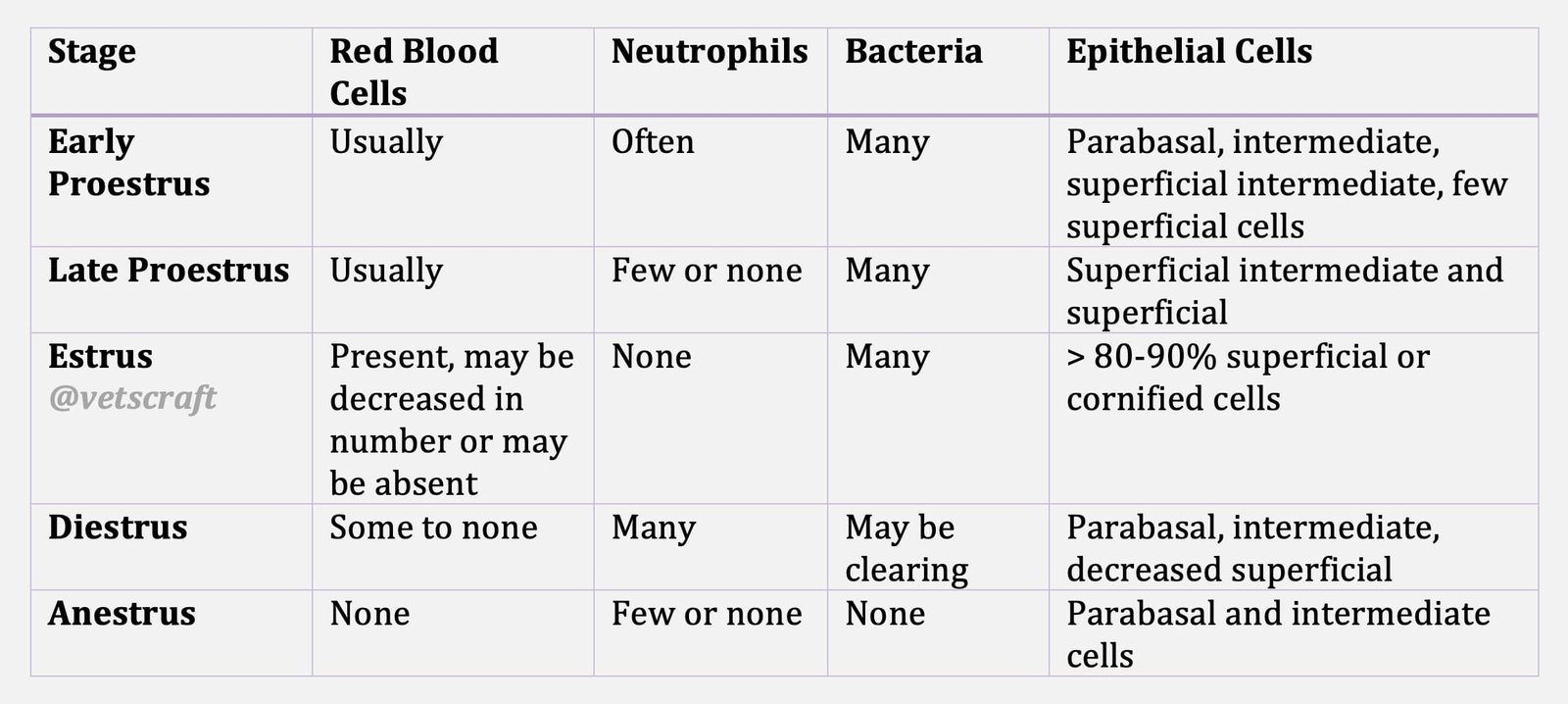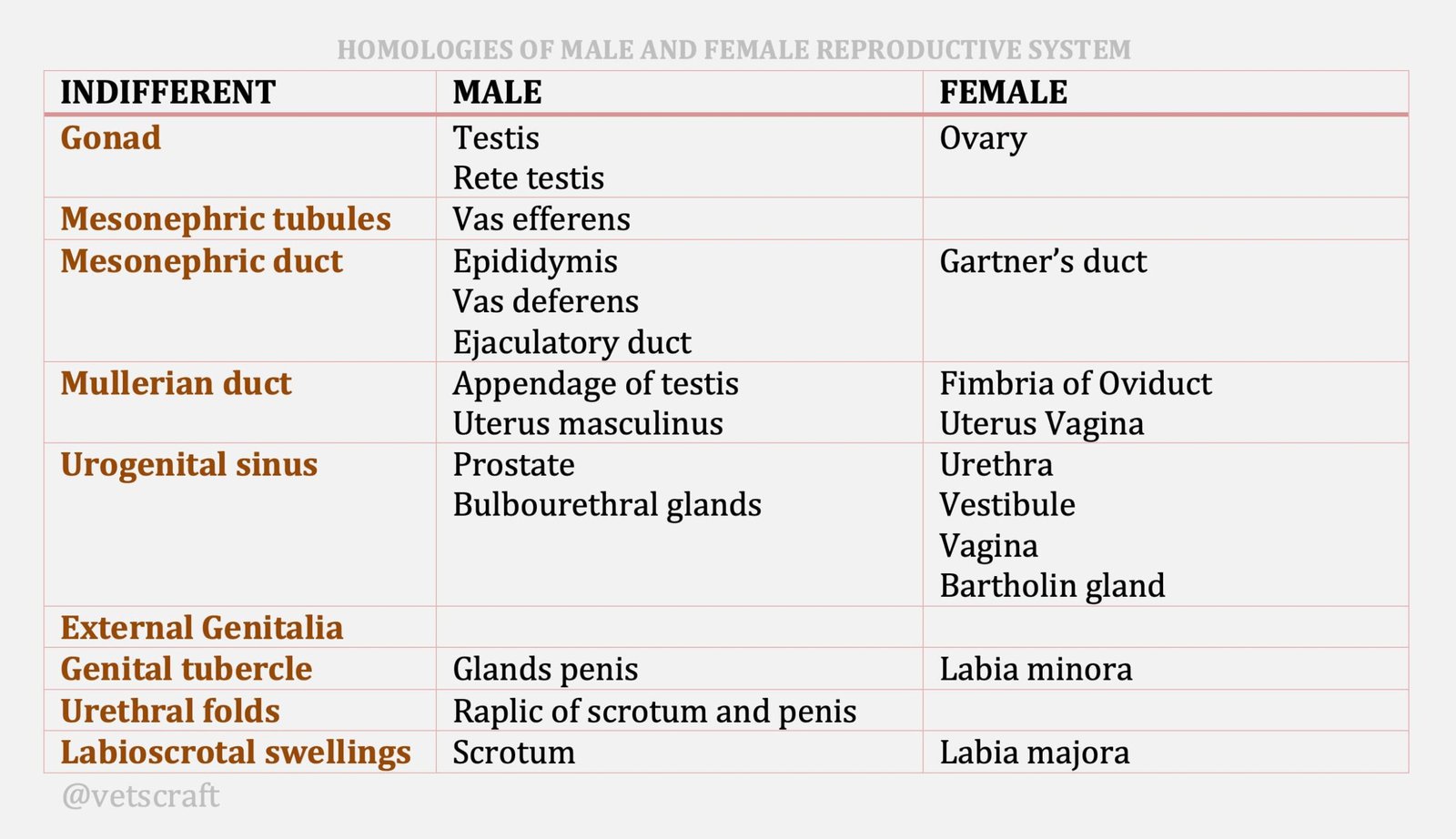Estrus Detection in Dogs
Estrus detection in dogs is required for effective breeding management and reproductive monitoring. Estrus, or the heat cycle, occurs approximately every six months in female dogs and is characterized by behavioural and physiological changes.
Estrus detection in dogs is done by:
- Based on estrus signs in bitches (female dogs)
- Vaginal Exfoliative Cytology (VEC)
- Vaginal Endoscopy
- Hormone Assay
Based on Estrus Signs in Dogs
Proestrus
- The bitch is playful.
- Appears sexually attractive to the male but refuses mounting attempts by the male by moving away, baring of the teeth and snapping.
- The bitch may keep her tail tight against the perineum and cover her vulva. This behaviour changes as proestrus progresses.
- The female becomes more receptive, seeks males, playing and teasing but still refuses the male by crouching or lying down.
- In late proestrus, the bitch may sit or stand passively when mounted.
- The bloody discharge fades and becomes transparent to straw coloured and the vulva which is swollen and hard during proestrus, now becomes small and soft as estrus approaches.
Estrus
- The bitch may crouch and elevate the perineum toward the male.
- The bitch attracts males over long distances due to the presence of potent pheromones.
- The vulva is soft and flaccid and the vaginal discharge is often straw coloured or pink.
Vaginal Exfoliative Cytology
Changes in exfoliate vaginal cells observed in simple and rapidly prepared smears can provide direct evidence of the progression of follicular development and estrogen secretion during proestrus, a reasonable estimate of the fertile period during oestrus and fairly accurate estimation of the end of the fertile period and the timing of subsequent events of a resulting pregnancy.
Learn more about Vaginal Exfoliative Cytology (VEC) in dogs by clicking here.
The different cell types represent stages of cell death. As healthy round vaginal cells die, they then become larger and more irregular in shape. The nuclei within vaginal epithelial cells also undergo changes that reflect cell death. The nucleus becomes progressively smaller, then pyknotic, before disintegrating, leaving a nuclear “ghost” and then anuclear cell.
Cytologic Staging of Estrous Cycle

Vaginal Endoscopy
Vaginal endoscopy is a valuable tool for detecting estrus in dogs by allowing direct visualisation of the vaginal mucosa.
During the estrous cycle, the vaginal epithelium undergoes distinct changes that can be assessed through endoscopic examination.
In proestrus, vaginal endoscopy reveals a highly vascularized and edematous mucosa with prominent folds, indicating the initial phase of the reproductive cycle. As the cycle progresses into estrus, the vaginal mucosa becomes pale, wrinkled, and less vascularized due to increasing estrogen levels.
Learn more about Vaginal Endoscopy in Dogs by clicking here.
Hormone Assay
Hormone assay is a method for detecting estrus in dogs by measuring reproductive hormone levels in blood.
The primary hormones analyzed for estrus detection are progesterone and luteinizing hormone (LH). Progesterone levels begin to rise during late proestrus and continue to increase through estrus and diestrus.
Measuring serum progesterone helps predict ovulation, as a level of approximately 5 ng/mL often indicates ovulation is occurring. This test is widely used because it provides a clear timeline for mating or artificial insemination.
Learn more about Hormone Assay in Dogs for Estrus Detection by clicking here.

